 W
WThe official language of the Netherlands is Dutch, spoken by almost all people in the Netherlands. Dutch is also spoken and official in Aruba, Bonaire, Belgium, Curaçao, Saba, Sint Eustatius, Sint Maarten and Suriname. It is a West Germanic, Low Franconian language that originated in the Early Middle Ages and was standardised in the 16th century.
 W
WBrabantian or Brabantish, also Brabantic or Brabantine, is a dialect group of the Dutch language. It is named after the historical Duchy of Brabant, which corresponded mainly to the Dutch province of North Brabant, the Belgian provinces of Antwerp and Flemish Brabant as well as the Brussels-Capital Region and the province of Walloon Brabant. Brabantian expands into small parts in the west of Limburg, and its strong influence on the Flemish dialects in East Flanders weakens toward the west. In a small area in the northwest of North Brabant (Willemstad), Hollandic is spoken. Conventionally, the South Guelderish dialects are distinguished from Brabantian but for no objective reason other than geography.
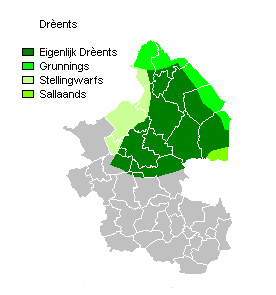 W
WDrèents is a collective term for Westphalian dialects spoken in Drenthe, a province of the Netherlands. They are spoken by about a half the population of the province.
 W
WDutch is a West Germanic language spoken by about 25 million people as a first language and 5 million people as a second language, constituting most of the population of the Netherlands and about 60% of the population of Belgium. It is the third most widely spoken Germanic language, after its close relatives English and German.
 W
WDutch Sign Language is the predominant sign language used by deaf people in the Netherlands.
 W
WEast Brabantian is one of the main divisions of the Brabantian dialect group recognized by the Woordenboek van de Brabantse dialecten. East Brabantian dialects are mainly spoken in the eastern part of the province of North Brabant. Classifications of Brabantian recognize it as a separate dialect group. Sometimes it is called Meierijs, after the Bailiwick of Den Bosch.
 W
WIn the Netherlands, the English language can be spoken by the vast majority of the population, with estimates of English proficiency reaching anywhere from 90% to 93% of the Dutch population according to various estimates. Contributing factors for the high degree of English fluency are the country's small size, dependence on international trade, and the use of subtitles for foreign languages on television, rather than audio dubbing. Dutch children have to start learning English in primary school from age ten at the latest. Additionally, more and more Dutch schools, at all levels of education, have adopted English as a language to teach in.
 W
WFranconian or Frankish is a collective term traditionally used by linguists to refer to many West Germanic languages, some of which are spoken in what formed the historical core area of Francia during the Early Middle Ages. Linguistically, there are no typological features that are typical for all the various dialects conventionally grouped as Franconian. As such, it forms a residual category within the larger historical West Germanic dialect continuum rather than a homogeneous group of closely related dialects. For most of the varieties grouped under the term "Franconian", the diachronical connection to the Frankish language, which was spoken by the Franks, is unclear.
 W
WThe Frisian languages are a closely related group of West Germanic languages, spoken by about 500,000 Frisian people, who live on the southern fringes of the North Sea in the Netherlands and Germany. The Frisian languages are the closest living language group to the Anglic languages; the two groups make up the Anglo-Frisian languages group and together with the Low German dialects these form the North Sea Germanic languages. However, modern English and Frisian are not mutually intelligible, nor are Frisian languages intelligible among themselves, due to independent linguistic innovations and foreign influences.
 W
WFriso-Saxon is a group of West Germanic dialects found around the North Sea coast of the Netherlands and Germany, in an area historically known as Frisia. They are dialects of Low German/Low Saxon which have experienced strong influence from a Frisian language. The term was established by the Dutch researcher Johan Winkler in his work about Dutch, Low German and Frisian dialects in the region. In the following decades the term was adopted by some of Winkler's successors.
 W
WGronings, is a collective name for some Friso-Saxon dialects spoken in the province of Groningen and around the Groningen border in Drenthe and Friesland. Gronings and the strongly related varieties in East Frisia have a strong East Frisian influence and take a remarkable position within West Low German. The dialect is characterized by a typical accent and vocabulary, which differ strongly from the other Low Saxon dialects.
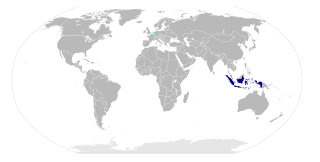 W
WIndonesian is the official language of Indonesia. It is a standardized variety of Malay, an Austronesian language that has been used as a lingua franca in the multilingual Indonesian archipelago for centuries. Indonesia is the fourth most populous nation in the world—of which the majority speak Indonesian, which makes it one of the more widely spoken languages in the world.
 W
WLimburgish, also called Limburgan, Limburgian, or Limburgic, is a West Germanic language spoken in the Dutch and Belgian provinces of Limburg and in the neighbouring regions of Germany.
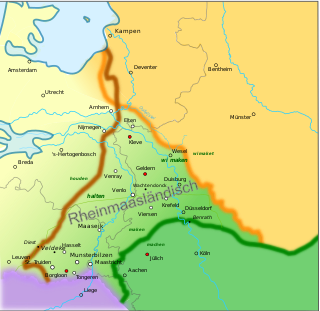 W
WMeuse-Rhenish is the modern term for literature written in the Middle Ages in the greater Meuse-Rhine area, in a literary language that is effectively Middle Dutch. This area stretches in the northern triangle roughly between the rivers Meuse and Rhine. It also applies to the Low Franconian dialects that have been spoken in that area continuously from medieval times up to now.
 W
WIn linguistics, Old Dutch or Old Low Franconian is the set of Franconian dialects spoken in the Low Countries during the Early Middle Ages, from around the 5th to the 12th century. Old Dutch is mostly recorded on fragmentary relics, and words have been reconstructed from Middle Dutch and Old Dutch loanwords in French.
 W
WOld Saxon, also known as Old Low German, was a Germanic language and the earliest recorded form of Low German/Northern Low Saxon. It is a West Germanic language, closely related to the Anglo-Frisian languages. It is documented from the 8th century until the 12th century, when it gradually evolved into Middle Low German. It was spoken throughout modern northwestern Germany, primarily in the coastal regions and in the eastern Netherlands by Saxons, a Germanic tribe that inhabited the region of Saxony. It partially shares Anglo-Frisian's Ingvaeonic nasal spirant law which sets it apart from Low Franconian and Irminonic languages, such as Dutch, Luxembourgish and German.
 W
WRipuarian is a German dialect group, part of the West Central German language group. Together with the Moselle Franconian which includes the Luxembourgish language, Ripuarian belongs to the larger Central Franconian dialect family and also to the Rhinelandic linguistic continuum with the Low Franconian languages.
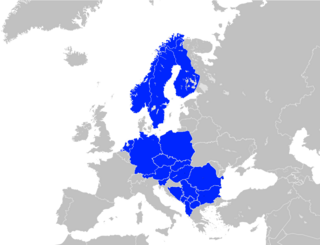 W
WRomani is an Indo-Aryan macrolanguage of the Romani communities. According to Ethnologue, seven varieties of Romani are divergent enough to be considered languages of their own. The largest of these are Vlax Romani, Balkan Romani (600,000), and Sinte Romani (300,000). Some Romani communities speak mixed languages based on the surrounding language with retained Romani-derived vocabulary – these are known by linguists as Para-Romani varieties, rather than dialects of the Romani language itself.
 W
WScheveningen dialect is a dialect of Dutch spoken in the Scheveningen district of The Hague.
 W
WThe Sittard dialect is a Limburgish dialect spoken mainly in the Dutch city of Sittard. It is also spoken in Koningsbosch and in a small part of Germany (Selfkant), but quickly becoming extinct there. Of all other important Limburgish dialects, the dialect of Sittard is most closely related to that of the Roermond dialect.
 W
WSouth Guelderish refers to the easternmost group of Dutch dialects spoken along the lower Rhine. In its narrower sense, the term refers strictly to the Rivierenlands, Nijmeegs, and Liemers sub-dialects; in its broader sense, the term encompasses also North Limburgish in the Netherlands and Kleverlander in Germany. South Guelderish — especially Rivierenlands — is sometimes included as part of Brabantic, a more widely spoken Dutch dialect and the closest relative of South Guelderish. Alternatively, it is considered to extend southward into Northern Limburg until the Uerdingen line. It is arguably more appropriate to group South Guelderish, North Limburgish and, Kleverlander into one dialect group—East Dutch.
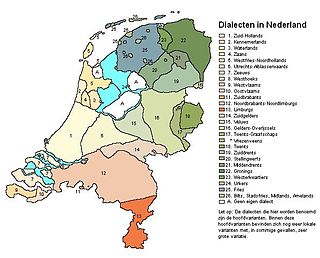 W
WSouth Hollandic is a group of subdialects of the Hollandic dialect that are spoken in the southern part of the Hollandic-speaking area. An example of a South Hollandic dialect is The Hague dialect.
 W
WStadsfries or Town Frisian is a set of dialects spoken in certain cities in the province of Friesland in the northern Netherlands, namely Leeuwarden, Sneek, Bolsward, Franeker, Dokkum, Harlingen, Stavoren, and to some extent in Heerenveen. For linguistic reasons, the outlying and insular dialects of Midsland (Terschelling), Ameland, Het Bildt, and Kollum are also sometimes tied to Stadsfries.
 W
WUrkers is the local language of the municipality and former island of Urk, located on the west coast of the Dutch province of Flevoland. Urk was an island until the middle of the 20th century. It was originally located in the Zuiderzee, a bay of the North Sea, which became an inland sea called IJsselmeer when a dam was built to secure the Dutch coast against floods. Inhabitants of Urk had been mostly fishermen and still predominantly make their living from North Sea fishing.
 W
WWest Central German belongs to the Central, High German dialect family of German. Its dialects are Franconian and comprise the parts of the Rhinelandic continuum located south of the Benrath line isogloss, including the following sub-families:Central Franconian Ripuarian, spoken in North Rhine-Westphalia and German-speaking Belgium and a small edge in the south of the Dutch province of Limbourg. Moselle Franconian in Rhineland-Palatinate, Saarland and France Luxembourgish in Luxembourg, Belgium and France Hunsrik, spoken in Brazil and derived from the Hunsrückisch dialect of Moselle Franconian Rhine Franconian Palatinate Franconian, spoken in Rhineland-Palatinate Lorraine Franconian in the French region of Lorraine Bukovina German in Bukovina (extinct) Pennsylvania German in historical communities in North America, especially in Pennsylvania. Hessian in Hesse and the Rhenish Hesse region of Rhineland-Palatinate North Hessian Central Hessian East Hessian South Hessian
 W
WWest Flemish is a collection of dialects spoken in western Belgium and the neighbouring areas of France and Netherlands.
 W
WWest Frisian, or simply Frisian, is a West Germanic language spoken mostly in the province of Friesland in the north of the Netherlands, mostly by those of Frisian ancestry. It is the most widely spoken of the Frisian languages.
 W
WThe West Frisian languages are a group of closely related, though not mutually intelligible, Frisian languages of the Netherlands. Due to the marginalization of all but mainland West Frisian, they are often portrayed as dialects of a single language.